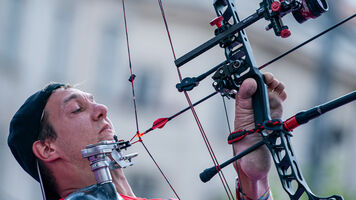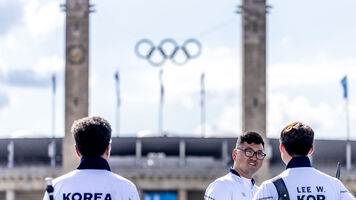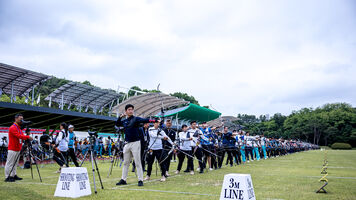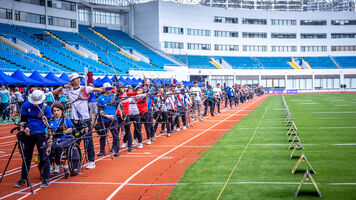Beginners guide to archery at the Asian Games in Hangzhou
The archery competitions at the 2022 Asian Games – they are taking place in late 2023, but retain their initial pre-pandemic-delay year tag of 2022 – run during the first week of October in the Chinese city of Hangzhou.
It’s redemption time for the Korean recurve women, long the cream of the international crop.
They had a disastrous campaign at the world championships, failing to secure either an Olympic quota or any podium at all – no medal in the team or the individual events.
Juxtapose that against the phenomenal rise of India this season…
Three senior World Archery Champion crowns, including both the compound women’s and compound men’s individual titles courtesy Pravin Deotale and 18-year-old Aditi Swami.
The country has never had an individual Asian Games winner before, only one team result in 2014. But this is India’s year.
These Asian Games are the first in the multisport event’s 45-year archery history (the sport joined at the eighth edition in 1978) to award 10 gold medals, offering a full slate for both recurve and compound archers in individual, mixed team and team competitions.
Key information
What’s happening? The archery competitions at the 19th edition of the Asian Games on 1-7 October 2023 at Fuyang Yinhu Sports Centre in Hangzhou, China.
What’s at stake? A full slate of 10 Asian Games Champion titles – five for recurve and five for compound – for the very first time, and six quota places for the Paris 2024 Olympic Games.
Who’s competing? A total of 283 archers – 148 men and 135 women – from 33 countries, with 168 competing in the recurve and 115 in the compound events.
What’s the story? Delayed one year due to border closures implemented by China during the pandemic, the Asian Games now fall squarely into the qualification period for the Paris 2024 Olympics. There are six quota spots available, to the recurve mixed team winner, as well as another two archers ranked highly in the individual events. But this mulitsport Games is very much seen as a continental versions of the Olympics themselves, and securing medals in Hangzhou is of the utmost important to teams from across Asia.
Defending champions
The winners at the 2018 Asian Games in Jakarta, where no individual titles were awarded to compound archers:
- Recurve men: Kim Woojin, Korea
- Recurve women: Zhang Xinyan, China
- Recurve men’s team: Korea
- Recurve women’s team: Korea
- Recurve mixed team: Japan
- Compound men’s team: Korea
- Compound women’s team: Korea
- Compound mixed team: Chinese Taipei
The compound champions at the 2014 Asian Games in Incheon:
- Compound men: Esmaeil Ebadi, Iran
- Compound women: Choi Bomin, Korea
Event schedule
- Sunday 1 October: Qualification
- Monday 2 October: Elimination
- Tuesday 3 October: Elimination
- Wednesday 4 October: Mixed team finals (Olympic quotas)
- Thursday 5 October: Compound team finals
- Friday 6 October: Recurve team finals
- Saturday 7 October: Finals (Olympic quotas)
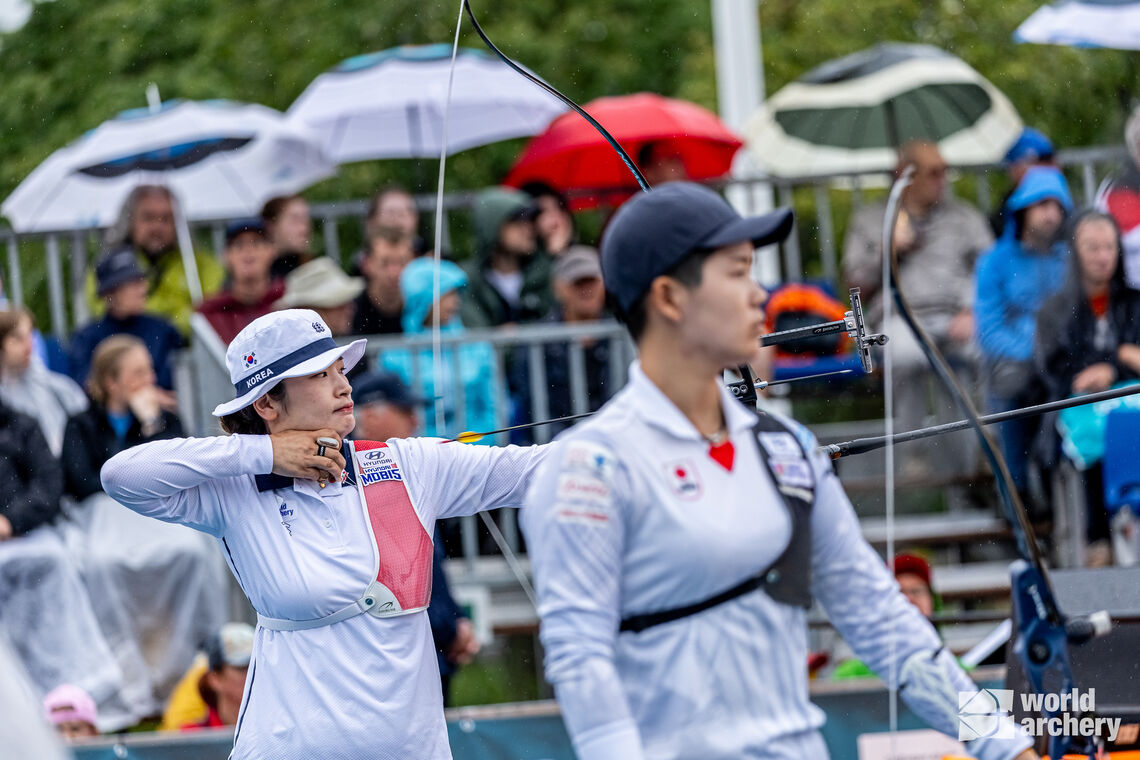
The line-up
These are the top-ranked individual archers competing in Hangzhou (as of Thursday 28 September):
- Recurve men: Kim Woojin, Korea (world rank: 3)
- Recurve women: Lim Sihyeon, Korea (world rank: 3)
- Compound men: Abhishek Verma, India (world rank: 5)
- Compound women: Jyothi Surekha Vennam, India (world rank: 4)
These are the nations that will contest the team medals:
- Recurve men’s team (18): Bangladesh, China, Chinese Taipei, DPR Korea, Hong Kong China, Indonesia, Iran, Japan, Kazakshan, Korea, Malaysia, Mongolia, Pakistan, Saudi Arabia, Qatar, Thailand, Uzbekistan and Vietnam.
- Recurve women’s team (17): Bangladesh, China, Chinese Taipei, DPR Korea, Hong Kong China, Indonesia, Iran, Japan, Kazakshan, Korea, Malaysia, Mongolia, Saudi Arabia, Qatar, Thailand, Uzbekistan and Vietnam.
- Recurve mixed team (23): Bangladesh, Bhutan, China, Chinese Taipei, DPR Korea, Hong Kong China, Indonesia, Iran, Japan, Kazakhstan, Korea, Kyrgyz Republic, Malaysia, Mongolia, Myanmar, Nepal, Pakistan, Qatar, Saudi Arabia, Thailand, UAE, Uzbekistan and Vietnam.
- Compound men’s team (15): Bangladesh, Bhutan, Chinese Taipei, Hong Kong China, Indonesia, Iran, Kazakhstan, Korea, Malaysia, Mongolia, Qatar, Saudi Arabia, Singapore, Thailand and Vietnam.
- Compound women’s team (9): Bangladesh, Chinese Taipei, Hong Kong China, Indonesia, Kazakhstan, Korea, Mongolia, Thailand and Vietnam.
- Compound mixed team (17): Bangladesh, Chinese Taipei, Hong Kong China, Indonesia, Iran, Iraq, Kazakhstan, Korea, Malaysia, Mongolia, Nepal, Qatar, Philipines, Singapore, Thailand, UAE and Vietnam.
Storylines
1) Who goes through? There’s an unusual system in place at the Asian Games, which sees only the top two individuals in each team after qualification proceed through to the matchplay bracket. So even though a country may enter four archers in a single event, there is no chance that one nation can sweep the podium.
2) The significance. It is not easy to explain how important an Asian Games medal is across the continent – but they are particularly valuable in China, which holds national multisport games (kind of a country-wide Olympics) between provinces every four years. The medal table from that Chinese-only event also includes other major results secured during the period – but not all podiums are equal. An Olympic gold medal is worth three national games gold medals. An Asian Games gold medal? Two.
3) Path to Paris. Try and find one person (who has some interest in this sport) who thought the Korean women would be arriving in Hangzhou without a quota place for the 2024 Olympics. The best bit is – it’s not even guaranteed here, either. If the results in China end up identical to the results from the last Asian Games, five years ago in Jakarta, the Korean women would be leaving the competition without a quota place, too!
4) Aditi Swami. One way or another, India will find itself in the spotlight during the competition week. But wouldn’t it be wonderful if reigning under-18 world champion and senior World Archery Champion Swami added yet another major – and historic – victory in 2023. She’s already a near-lock for the breakout of the season award, why not make an even stronger case for the overall athlete of the year trophy?
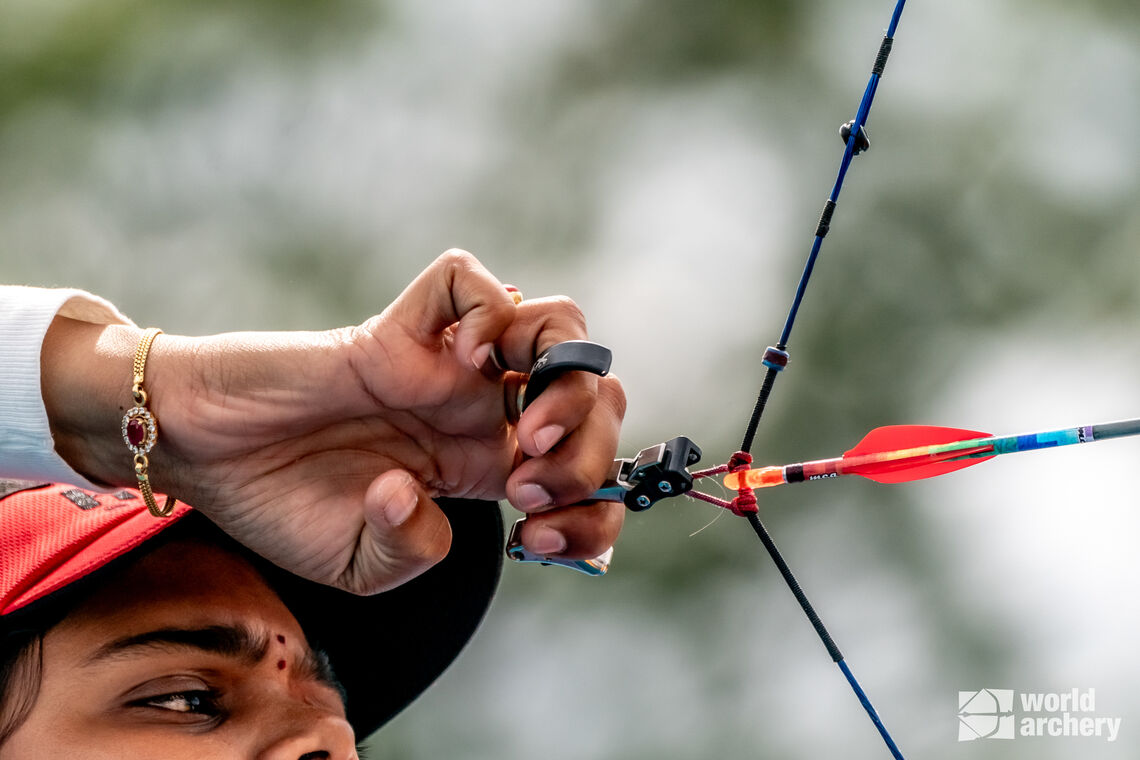
Competition format
Archers at the Asian Games use either a recurve or compound bow and compete in the discipline of target archery.
The recurve competitions take place over 70 metres and matches are decided using the set system. The compound competitions take place over 50 metres and matches are decided using cumulative scoring.
A 72-arrow qualifying round is used to rank and seed athletes (and teams) for the matchplay phase. Archers then progress through head-to-head brackets, with the loser of each match eliminated and the winner advancing until a champion is crowned.
During recurve set system matches, the goal is to accrue a target number of set points, which is six in the individual events and five in the mixed team and team events. Individual archers shoot sets of three arrows, mixed teams (pairs) sets of four arrows (two each), and teams (three athletes) sets of six arrows (two each). The archer or team with the highest arrow score in a set is awarded two set points, or one each for a draw.
During compound cumulative scoring matches, the goal is to accrue the highest total arrow score over a set number of arrows. Individual archers shoot matches of 15 arrows, split into five ends of three; mixed teams shoot matches of 16 arrows, split into four ends of four (two each); and teams shoot matches of 24 arrows, split into four ends of six (two each).
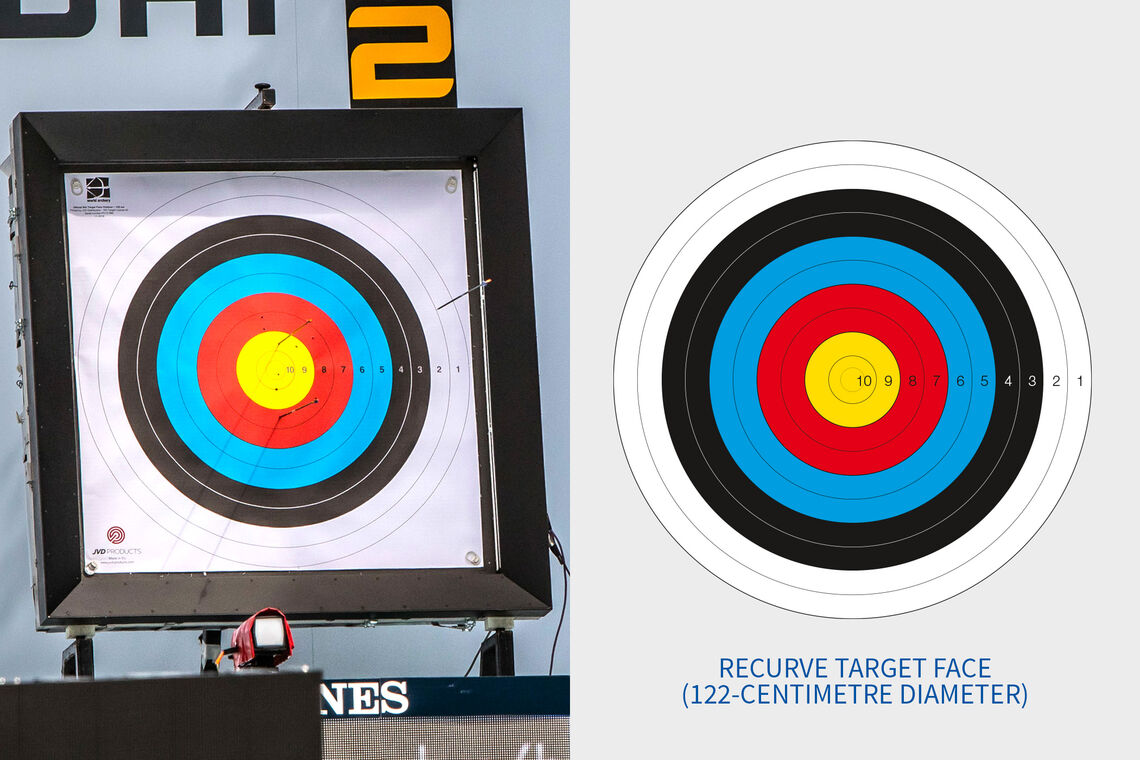
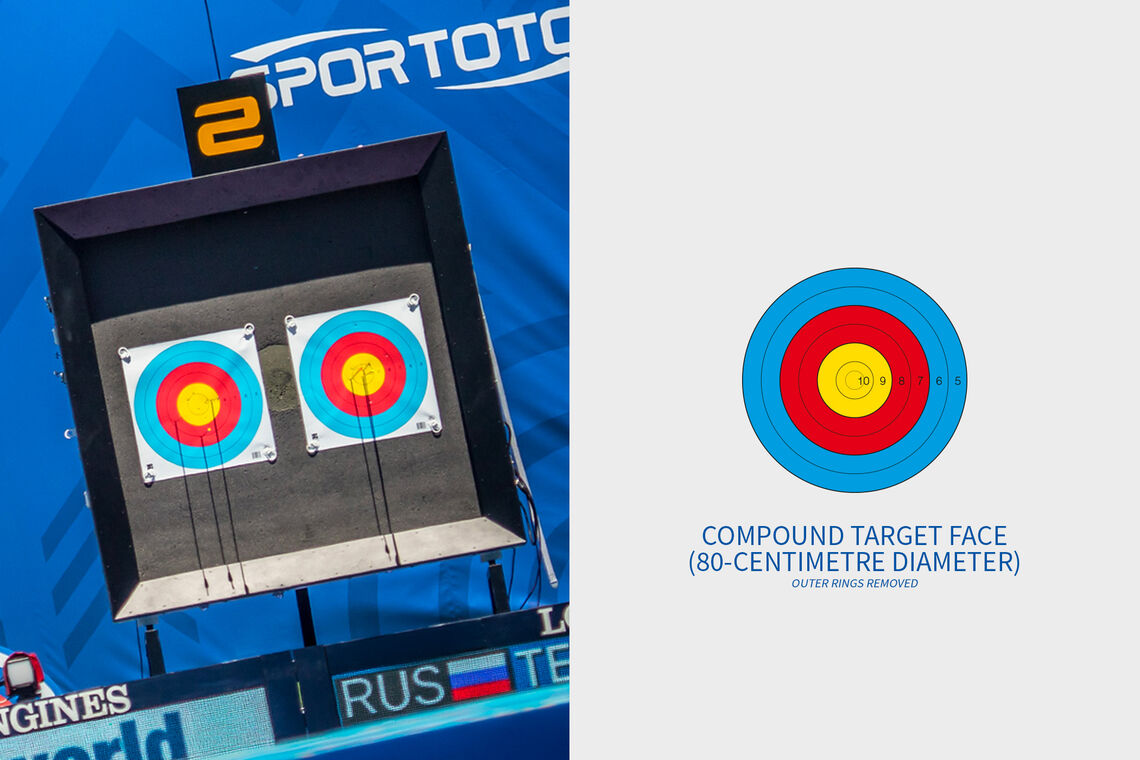
Equipment
Archers competing at the Asian Games use a recurve or compound bow.
The recurve bow is the modern evolution of traditional bows that have existed for 1000s of years. The limbs positioned at the top and bottom of the bow curve back away from the archer at each tip. This is what gives the ‘re-curve’ its name. Recurve has been the bowstyle used at the Olympic Games since archery’s reintroduction to the programme in 1972. It has featured at the Asian Games since 1978.
The compound bow was invented in the 1960s as a more mechanically efficient piece of archery equipment. The design uses a levering system of pulleys and cables, making it faster and decidedly more accurate than other types of bow. Archers also use mechanical release aids and magnified sights. Compound was added to the World Archery Championships in 1995. It made its debut at the Asian Games in 2014.
Competition at the 2022 Asian Games starts with qualifying on Sunday 1 October 2023.






